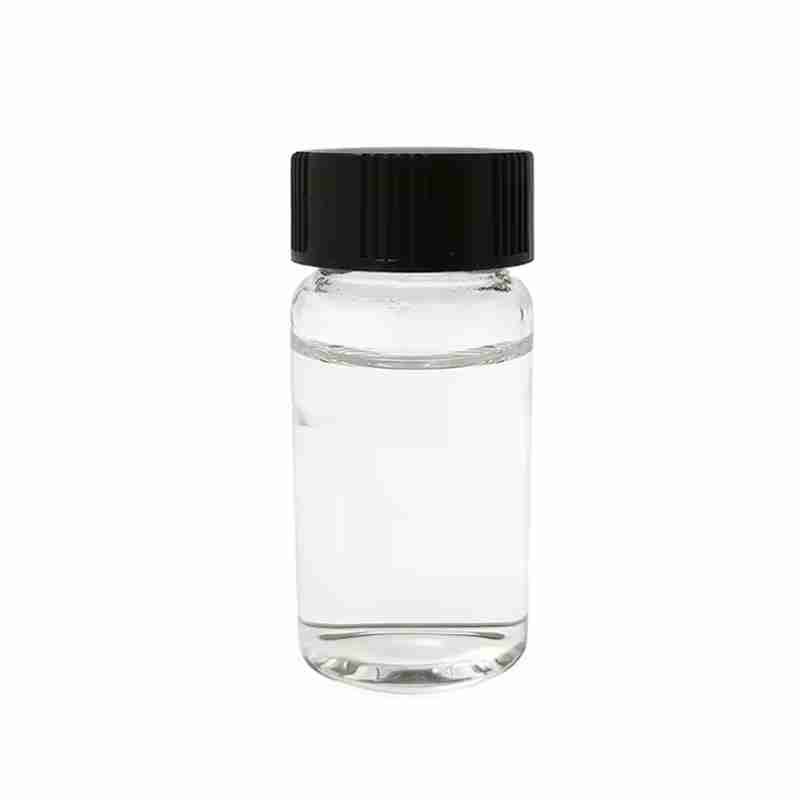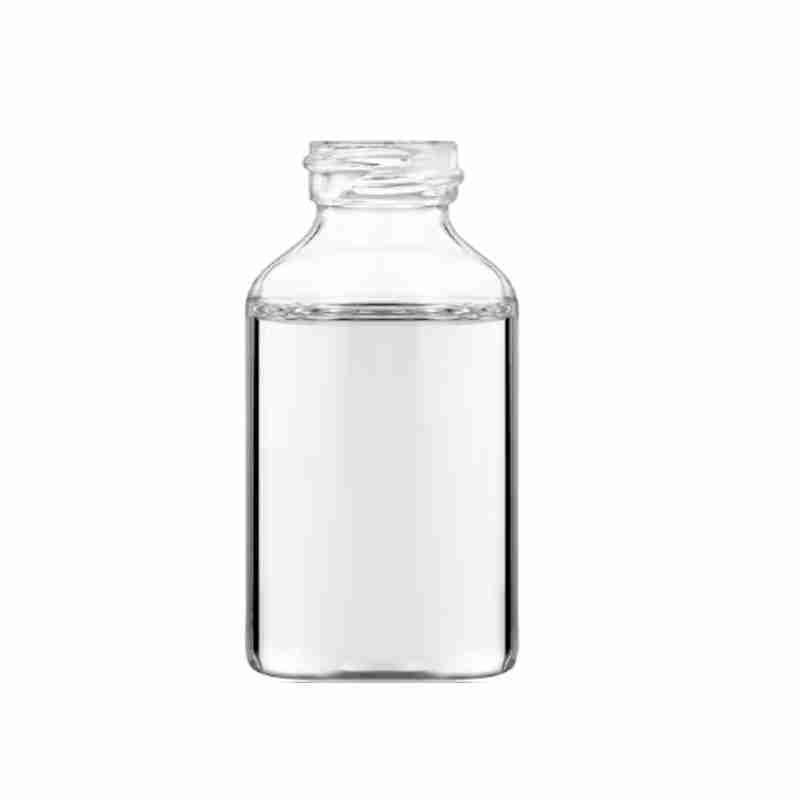Polyhexamethylene Biguanide Hydrochloride CAS #32289-58-0
Polyhexanide (Polyhexamethylene biguanide hydrochloride, PHMB) is a polymer used as a disinfectant and antiseptic. Spelled Polihexanide (inn) for dermatological purposes and sold under the names lavasept, serasept, prontosan and omniside.?PHMB has been shown to be resistant to Pseudomonas aeruginosa, Staphylococcus aureus, Escherichia coli, Yeast infection albicans, Aspergillus Brazil, Enterococcus as well as Klebsiella pneumoniae.
The average molecular weight of polyhexamethylene biguanide hydrochloride is 1100-1800, the molecular formula is (C8H17N5)n??xHCl, n=12-16. Polyhexamethylene biguanide hydrochloride (PHMB) is a broad-spectrum antibiotic that can kill gram-positive bacteria, gram-negative bacteria, fungi and yeast.
发送询盘
Polyhexamethylene Biguanide Hydrochloride CAS #32289-58-0
| Poly(hexamethylenebiguanide)hydrochloride Basic information |
| Description?Application?Safety |
| Product Name: | Poly(hexamethylenebiguanide)hydrochloride |
| Synonyms: | POLY(HEXAMETHYLENEBIGUANIDE) HCL;Polyhexamethylene biguanidine;Acticide SR 1296;Arlagard E;BG 1;BG-IR;Cosmocil;Lavasept |
| CAS: | 32289-58-0 |
| MF: | C10H23N5 |
| MW: | 213.32312 |
| EINECS: | 1308068-626-2 |
| Product Categories: | Antibacterial agent;CHEMICAL;Biocide;Fungicide series;Intermediates & Fine Chemicals;Pharmaceuticals;Polymers;Industrial/Fine Chemicals;Water treatment;Disinfectants;PHM;intermediate;32289-58-0 |
| Mol File: | 32289-58-0.mol |
 |
|
| Poly(hexamethylenebiguanide)hydrochloride Chemical Properties |
| storage temp. | Inert atmosphere,Room Temperature |
| solubility | Water |
| form | Solid |
| color | White to off-white |
| InChI | InChI=1S/C10H23N5/c1-9(11)14-7-5-3-4-6-8-15-10(12)13-2/h3-8H2,1-2H3,(H2,11,14)(H3,12,13,15) |
| InChIKey | SAGIGHPRUJPLKX-UHFFFAOYSA-N |
| SMILES | C(=N)(C)NCCCCCCNC(=N)NC |
| CAS DataBase Reference | 32289-58-0(CAS DataBase Reference) |
| EPA Substance Registry System | Poly(iminoimidocarbonyliminoimidocarbonyliminohexamethylene) hydrochloride (32289-58-0) |
| Safety Information |
| Hazardous Substances Data | 32289-58-0(Hazardous Substances Data) |
- 2
- 2-diallylpent-4-en-1-amine
- 4
- 95-16-9
- Ammonium sulfamate
- Benzothiazole
- cas:67889-00-3ح2
- cas:83524-75-8 | pigment black 32
- cas:928836-00-4 | 2
- cas:932745-70-5 | 4
- Chemical Minerals
- Coconut diethanolamide
- Daily Chemicals
- discount
- for sale
- General pvc resin
- hexyl D-glucoside
- in stock
- Lauramidopropyl betaine
- LAURIC ACID MONOETHANOLAMIDE
- Petroleum Additives
- Plasticiser
- Ploymers
- price
- PVC
- quotation
- Raw Materal
- Remove term: Petroleum Additives Petroleum Additive
- SODIUM ETHYL 2-SULFOLAURATE
Related Products
Polyhexamethylene guanidine hydrochloride, often abbreviated as PHMG-HCl, is a high molecular weight polymeric biguanide compound known for its potent antimicrobial properties. With a chemical structure that features a long chain of methylene groups bridged by guanidine units, PHMG-HCl is effective against a broad spectrum of microorganisms, including bacteria, viruses, and fungi.
This hydrochloride salt form of PHMG is highly soluble in water and is commonly used in various applications due to its non-irritant and non-toxic nature to human skin and mucous membranes. It is widely recognized for its ability to form a colorless and odorless solution, making it an ideal choice for use in personal care products, medical disinfectants, and water treatment processes.
The versatility of PHMG-HCl lies in its cationic nature, which allows it to bind to negatively charged microbial cell walls, disrupting their integrity and leading to cell death. This mechanism of action contributes to its effectiveness as a preservative and disinfectant. Moreover, its substantivity, or the ability to adhere to surfaces, enhances its long-lasting antimicrobial activity.
In summary, Polyhexamethylene guanidine hydrochloride is a reliable and efficient antimicrobial agent, pivotal in industries where hygiene and cleanliness are paramount, offering a safe and sustainable solution for microbial control.
3,4-Ethylenedioxythiophene is a synthetic organic compound characterized by its unique structure that includes a thiophene ring with ethylenedioxy substituents at the 3 and 4 positions. This compound is known for its potential applications in the synthesis of various organic materials, including pharmaceuticals and organic electronic devices such as sensors and solar cells. Its stability and reactivity make it a versatile intermediate in the chemical industry.
Chemical Name: Arabic gum
CAS No.: 9000-01-5
Appearance: powder
Product name:HYDROXYPROPYL GUAR HYDROXYPROPYLTRIMONIUM CHLORIDE
Purity:99%
Appearance:Light Yellow Powder
Package:Customized according to customer needs.
Sample:Available
Chemical Name: Potassium Castorate
CAS No.: 8013-05-6
Molecular Formula: C57H107K3O12
Molecular Weight: 1101.74718
Appearance: Yellow Liquid
Silicones are a family of synthetic polymers known for their versatility and stability. They are heat-resistant, non-toxic, and have excellent electrical insulation properties. Commonly used in various industries such as construction, automotive, aerospace, and personal care products, silicones offer a wide range of applications from sealants and adhesives to lubricants and medical devices. Their resistance to extreme temperatures and weathering makes them a preferred choice for many high-performance applications.
Product name:Cyclopentane
Purity:96%
Appearance:White powder
Package:25kg/bag
Sample:Available
Chemical Name: Zinc citrate
Synonyms: Zinc citrate trihydrate
CAS No.: 546-46-3
Molecular Formula: C6H8O7Zn
Molecular Weight: 257.5
Appearance: White powder
Chemical Name: STODDARD SOLVENT
CAS No.: 64742-88-7
Appearance: Colorless or Light Yellow Liquid
Silicone oil, known for its chemical designation as dimethicone or polydimethylsiloxane, is a synthetic polymer with a backbone of alternating silicon and oxygen atoms, creating a highly versatile and stable compound. It is renowned for its exceptional lubricating properties, heat resistance, and non-toxic nature, making it a staple in various industries, including cosmetics, automotive, and aerospace.
This hydrophobic, non-volatile oil is valued for its ability to provide a smooth, non-greasy feel and to form stable emulsions with other ingredients. In personal care products, silicone oil is used to impart a silky texture, reduce friction on the skin, and create a protective barrier against environmental stressors without clogging pores.
Silicone oil’s chemical inertness and resistance to oxidation contribute to its long shelf life and stability in formulations. It is also appreciated for its compatibility with a wide range of substances, allowing for the creation of multifunctional products.
In summary, silicone oil is a reliable and multifaceted ingredient, offering a combination of performance, safety, and sensory benefits. Its use in a variety of applications reflects its versatility and enduring appeal in the marketplace.
Chemical Name: o-Xylene
Synonyms: 1,2-Dimethylbenzene; ortho-xylene
CAS No.: 95-47-6
Molecular Formula: C8H10
Molecular Weight: 106.17
Succinimide is a heterocyclic organic compound and an important industrial chemical. It serves as a key intermediate in the synthesis of various pharmaceuticals, agrochemicals, and other specialty chemicals. Known for its reactivity and versatility, succinimide is widely used in the production of succinic anhydride, a precursor to many polymers and plasticizers, highlighting its significance in the chemical industry.

















